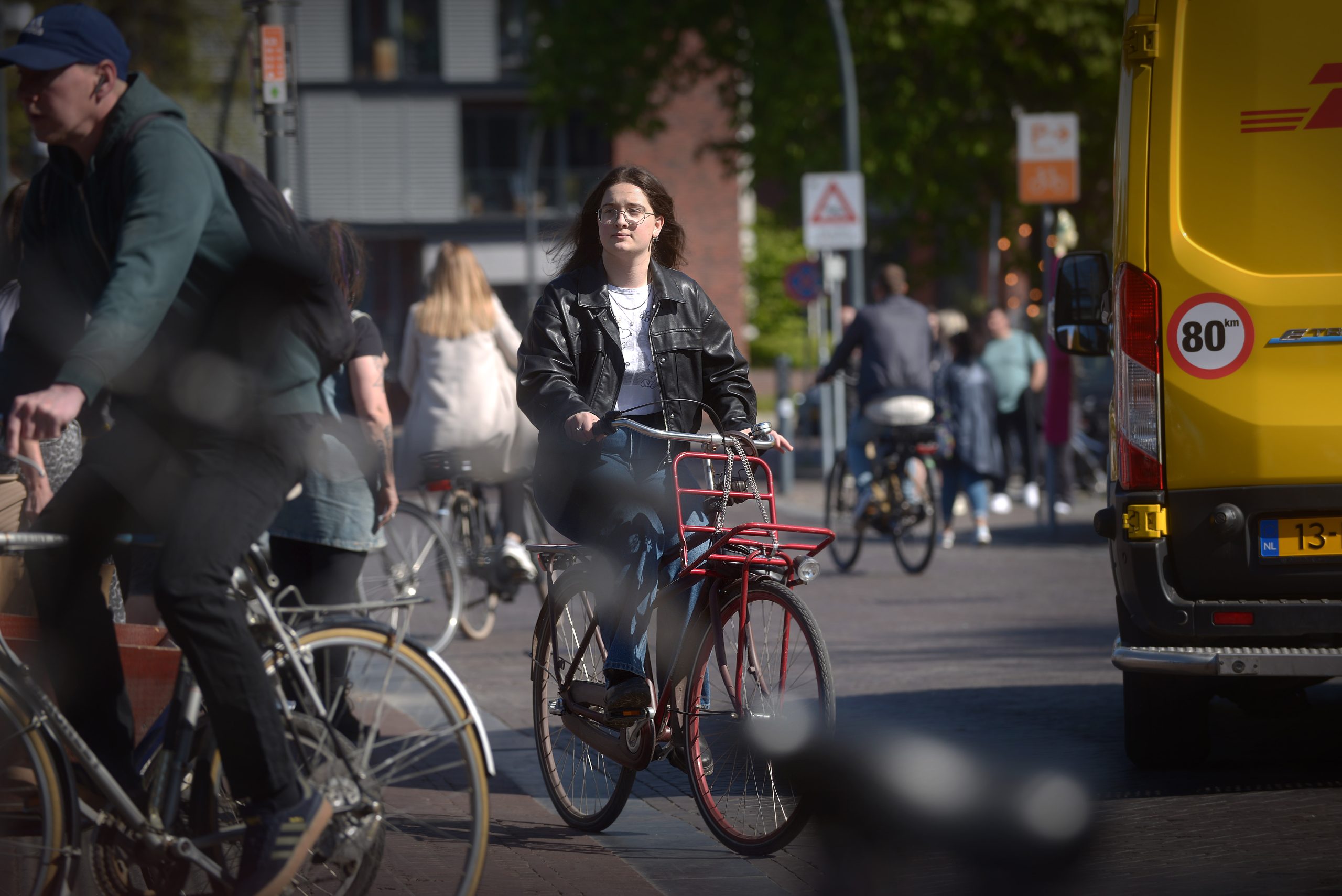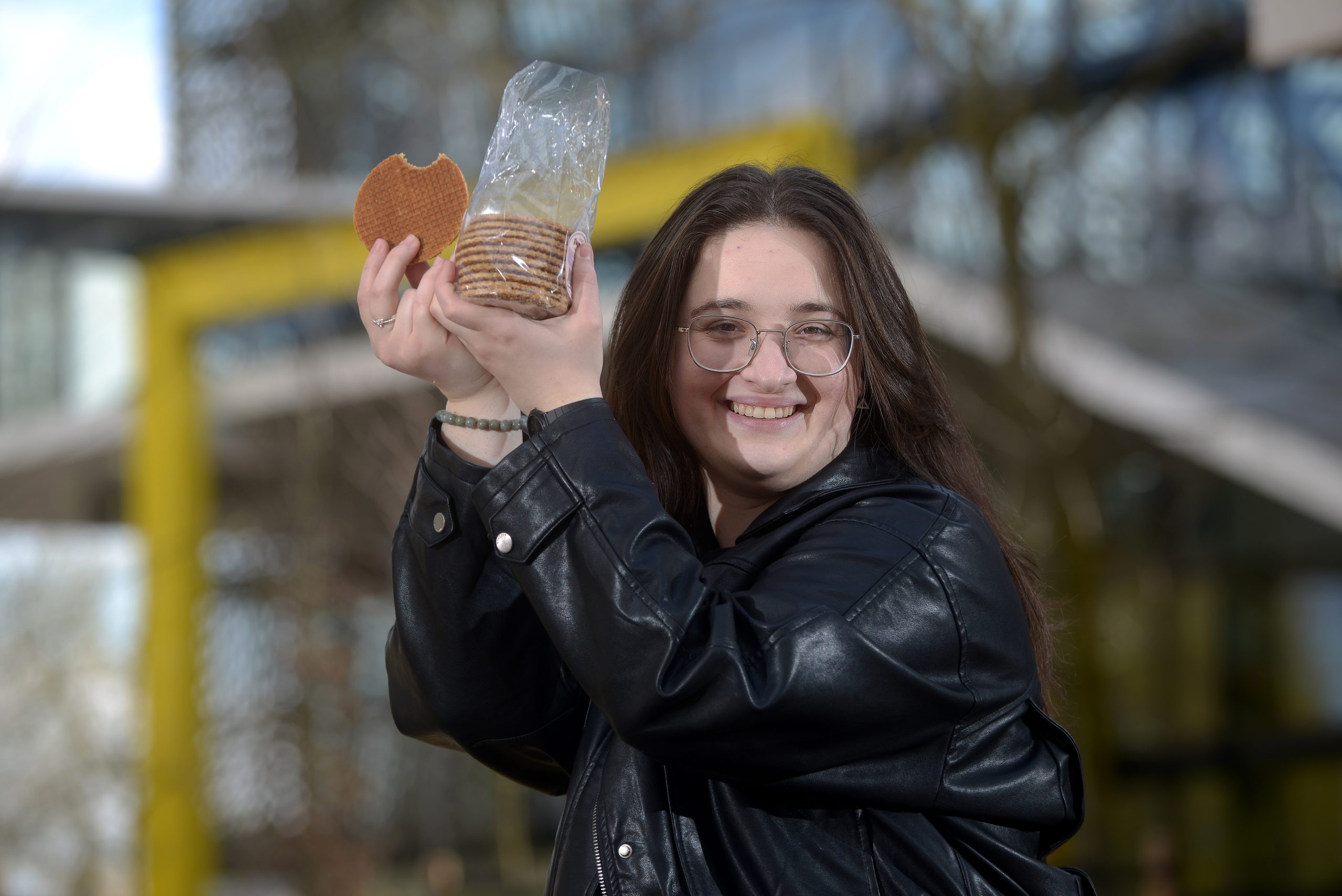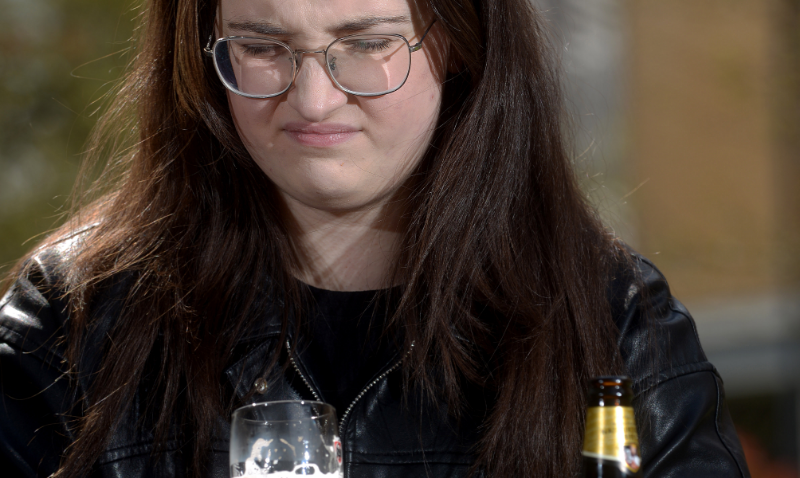Cycling through busy traffic while eating a boterham met hagelslag. What do international students think of Dutch culture, and Windesheim? WIN asked Nata Mindadze from Georgia.
Dutch beer: brewed to disappoint
Before I came to the Netherlands I asked myself: what do the Dutch have that’s uniquely Dutch? Besides clogs, cheese, windmills, tulips, and cycling, of course. The answer? The most common Dutch denominator is… beer! Heineken, Amstel, Grolsch, these brands are known all over the world. So, as a citizen of a country that is very proud of its alcohol (Georgian wine is unmatched!), I was excited to try Dutch beer.
My expectations were inhumanly high. I figured that if the Dutch are as proud of their beer as Georgians are of their wine, it must taste phenomenal and get one drunk very efficiently. Get drunk? Ah yes, I must mention that when Georgians drink, we both enjoy it AND get completely hammered. We love the taste of alcohol as much as we love feeling totally and utterly wasted. I really hate to say it, I do, but I was very disappointed when I first got here. Even though saying this out loud makes me fear deportation a little bit, it must be said regardless: I don’t think the Dutch know what good alcohol or getting drunk truly means.
When I hear the word alcohol, I expect to get drunk after a certain amount of consumption. Meanwhile, I spent 33 euros in two hours on multiple glasses of Heineken and Grolsch (at, amongst other bars, the Flying Horse) plus I had a free shot of something, and I didn’t even feel a little dizzy! And the taste of the beer? It wasn’t just bad, no, it was plain, almost tasteless. Whenever I touch one too many glasses of Georgian alcohol, I end up regretting being born and every single decision I’ve ever made in my life the next morning. Now, let’s not be too harsh. I have had some wonderfully sweet and fruity cocktails during my stay here. But it felt more like drinking slightly alcoholic juices and less like trying to get drunk. So if anyone knows where in Zwolle I can find some real alcohol, please let me know!
Dutch people on bikes: a form of art
The Dutch and their bikes, it really is a love affair on two-wheels. Why walk when you could risk your life cycling through traffic at speeds that would make a Formula 1 driver sweat? There’s this fascinating balance between practicality and sheer joy in how the Dutch cycle. They move with ease and fluidity, like they were born with pedals under their feet. The Dutch have mastered the art of multi-tasking while cycling. They’re on their phones, navigating traffic and doing their taxes, while performing the kind of wheelie that should be illegal. I can’t imagine doing that in Georgia. One pothole, and you’re suddenly explaining to the paramedics how you were only trying to get to work. Meanwhile, in the Netherlands, people breeze by with a toddler in the front basket and two leeks (‘prei’ in Dutch) tucked under one arm. It’s an art form

And the fietspaden? Ridiculous! These are not sad, painted lines on the side of a road. The Dutch have entire lanes dedicated solely to cycling. Well-separated from cars and pedestrians, making it seem like they’ve planned their cities around bikes rather than squeezing them in. For a Georgian, biking is a novelty, a weekend activity that makes you feel extra healthy. But for the Dutch… they have really perfected the art of cycling. It’s an extension of their being and an essential part of their identity. I noticed that a Dutch person on a bike glows. The synergy between them and their bikes is both flawless and unnerving. And somehow, I admire and respect them for it.
Dutch cuisine: phenomenal stroopwafels
Georgians like to enjoy life with the people we love, and our food reflects that. Every Georgian dish feels like a love letter to flavor, texture, and balance. I never realized how much I would miss Georgian dishes like Khachapuri (oozy cheese-filled goodness) and khinkali (dumplings bursting with meaty juices) until now. I tried Dutch food in the hope that it would fill at least a part of that void.

Ah, Dutch food. A gastronomic marvel that will make your taste buds weep… with sorrow. It’s hard to decide where to start with this culinary hate-crime. Let’s begin with the iconic Dutch meatballs, or ‘bitterballen’. They are just deep-fried mystery meat in a ball. The Dutch thought: why not throw everything leftover in a ball, fry it, and call it a delicacy?
And don’t even get me started on the ‘broodje hagelslag’. Yes, bread with sprinkles is a dish, I’ve been told. Chocolate sprinkles on a piece of bread. The absolute height of sophistication. Nothing says ‘I’m an adult’ like a boterham with sugar-coated despair. But wait, there’s hope. There’s one gem in the Dutch food world: stroopwafels! They will make you temporarily forget that everything else in Dutch cuisine is an international crime. Stroopwafels are the only thing holding this entire food culture together. They are phenomenal despite being very simple in concept. I will definitely bring them home to my sweet-tooth family! I loved the experience of buying warm stroopwafels and walking through the city. It felt like I understood a little what it’s like to be Dutch. But beyond that? It’s a world where creativity went to die.
Studying at Windesheim: where’s the hierarchy?
What’s it like for someone from Georgia to study at Windesheim? I feel like I’ve been thrown into an alternate reality. Firstly, the schedule differs every week; no two Mondays have the same set of classes at the same hour. That is the case for every other weekday as well. Isn’t that a planning nightmare? I guess people don’t care about establishing a routine. Why? Beats me. Also: 8:30 a.m. classes. It’s rare in Georgia to have a class before noon, and it’s a very unwelcome occurrence. Imagine my shock when I walked into my class (half-asleep) at that ungodly hour. Who decided that mornings are for learning? I hate it. And as a night owl, I hate that students manage to be awake and alert at 8:30 a.m.
Another thing. I realized that students and professors interact differently: the utter lack of hierarchy is mind-breaking. In Georgia, students usually stand at the bottom of the food chain. You listen, nod, and don’t ask too many questions. Here, professors and students have a buddy-buddy relationship. First-name basis and two-way street discussions and everything. While I respect the vibe, it’s weird. My idea of ‘class’ is sitting quietly, absorbing knowledge. Instead, I’m expected to engage. Yikes.
I mean, what’s next? Students eating in class? Oh wait, that happens too. It’s cool to bring a sandwich and munch away. Back home, it’s more like: don’t even think about it, or you’ll be kicked out. Here? It’s eating, with the occasional coffee slurp during a serious conversation about irregular migration. It’s refreshing. Still weird, though. Let’s talk about the teaching style. Windesheim threw out the theory-heavy textbooks and replaced them with handson projects. It is the university of applied sciences after all. It’s about rolling up your sleeves and doing stuff. My brain is finally being asked to work with the knowledge, not just regurgitate it.
So yeah, life at Windesheim is a lot of learning and thinking on my feet. And yes, I’m surviving, albeit with a lot of coffee and occasional confusion. But it’s all part of the adventure, and I’m learning more than I ever expected!
photography: Jasper van Overbeek
Nata Mindadze studies International Relations at Windesheim, until the middle of July.
